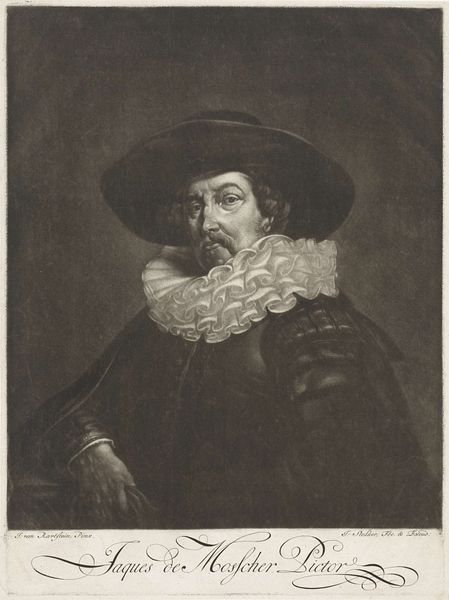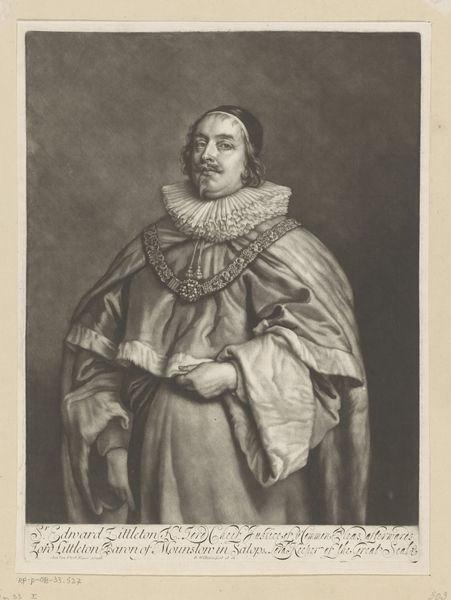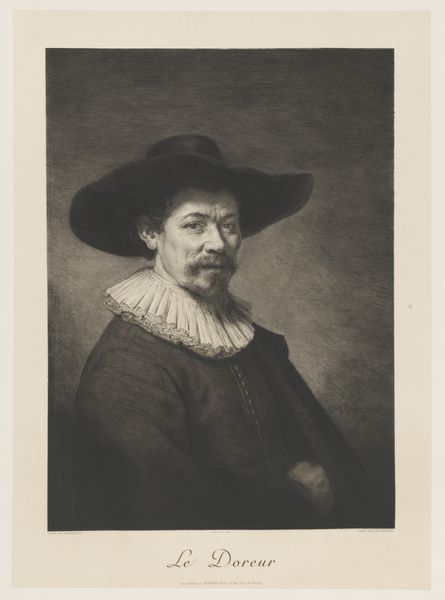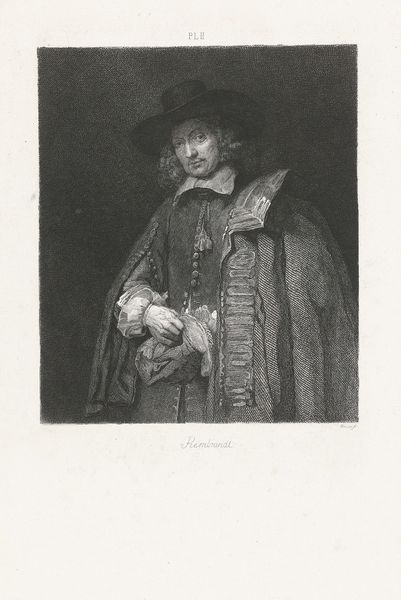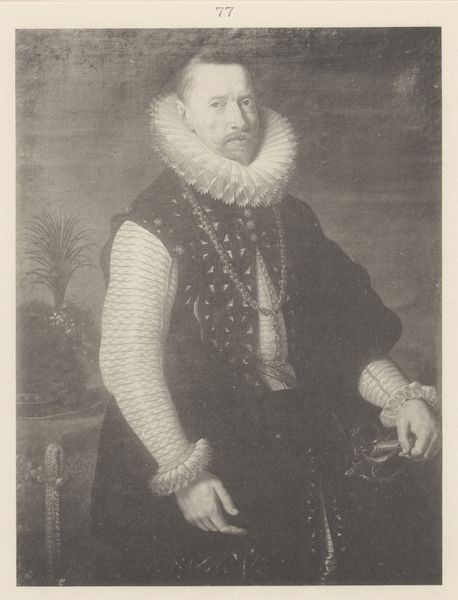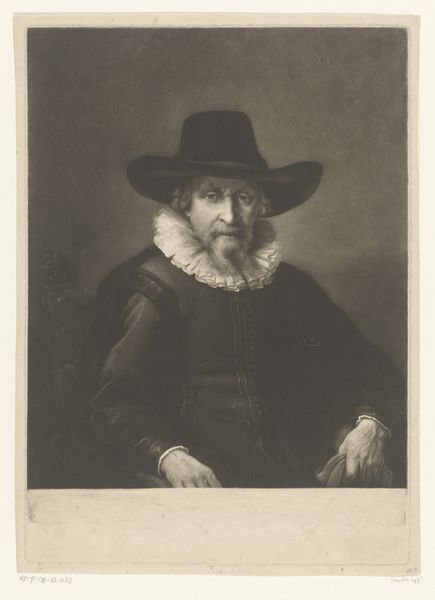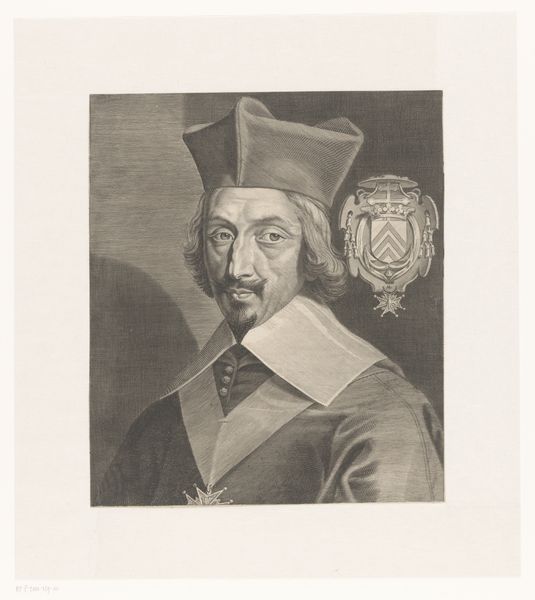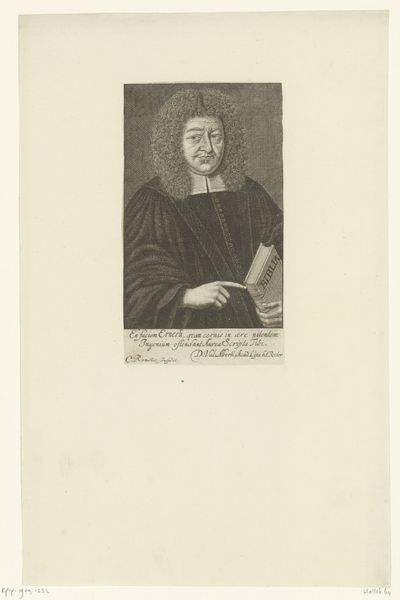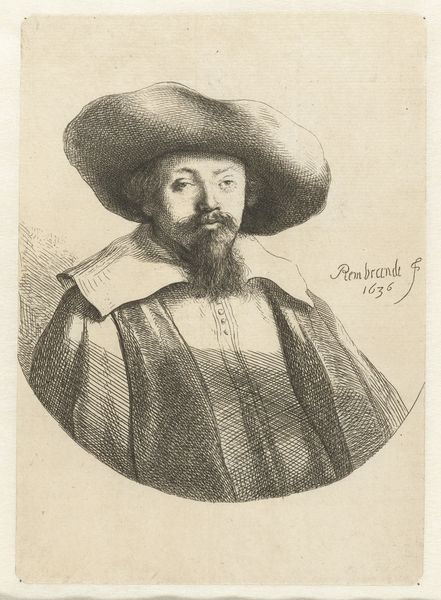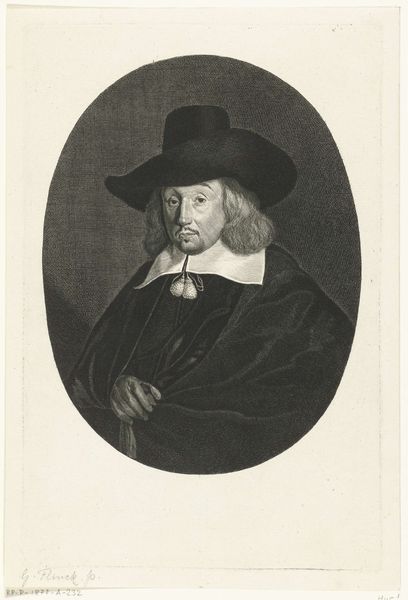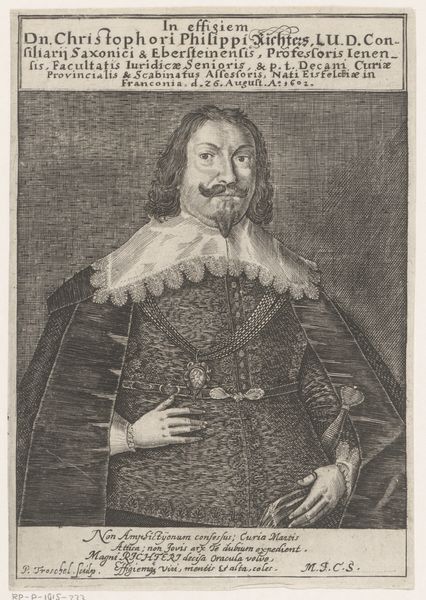
Dimensions: height 104 mm, width 77 mm
Copyright: Rijks Museum: Open Domain
Editor: So, we're looking at a print titled "Portrait of an Unknown Man," believed to be from somewhere between 1803 and 1835, attributed to the Dutch School. It's an engraving. It has this somber but somehow confident vibe. What draws your attention when you look at this piece? Curator: As a materialist, I’m most interested in the process of creating an engraving like this. Think about the labour involved, the skill in transferring an image to a metal plate. This isn't just about representation; it's about production. Who was this 'unknown man' in relation to the production and circulation of these prints, I wonder? Editor: That's a great point; I hadn't considered the socio-economic implications. Do you think that knowing it's a print rather than, say, a painting, changes how we perceive the sitter? Curator: Absolutely. Prints democratized art. This image could circulate much more widely than an original painting, reaching a different audience. Consider what it meant to reproduce a portrait like this, making it accessible and potentially affecting the sitter's social standing in entirely new ways. Who owned this print and why? What was consumed or distributed? These are things to explore. Editor: So the focus shifts from solely admiring the portrait itself, to understanding how its existence as a print shaped its meaning and use? Curator: Precisely. The materiality of the engraving - the metal plate, the ink, the paper – and the labor involved, were crucial to its role in society, even more than the artist's original vision. It allowed for art consumption on an unprecedented scale at this moment in history. Editor: This has totally changed how I view it. I was stuck on the 'unknown man,' but I realize the important part is what this *engraving* did for those who could access it. Curator: Exactly! Thinking about art in terms of material processes and their social impact opens up new avenues for interpretation, challenging our preconceptions about artistic value and reception.
Comments
No comments
Be the first to comment and join the conversation on the ultimate creative platform.

